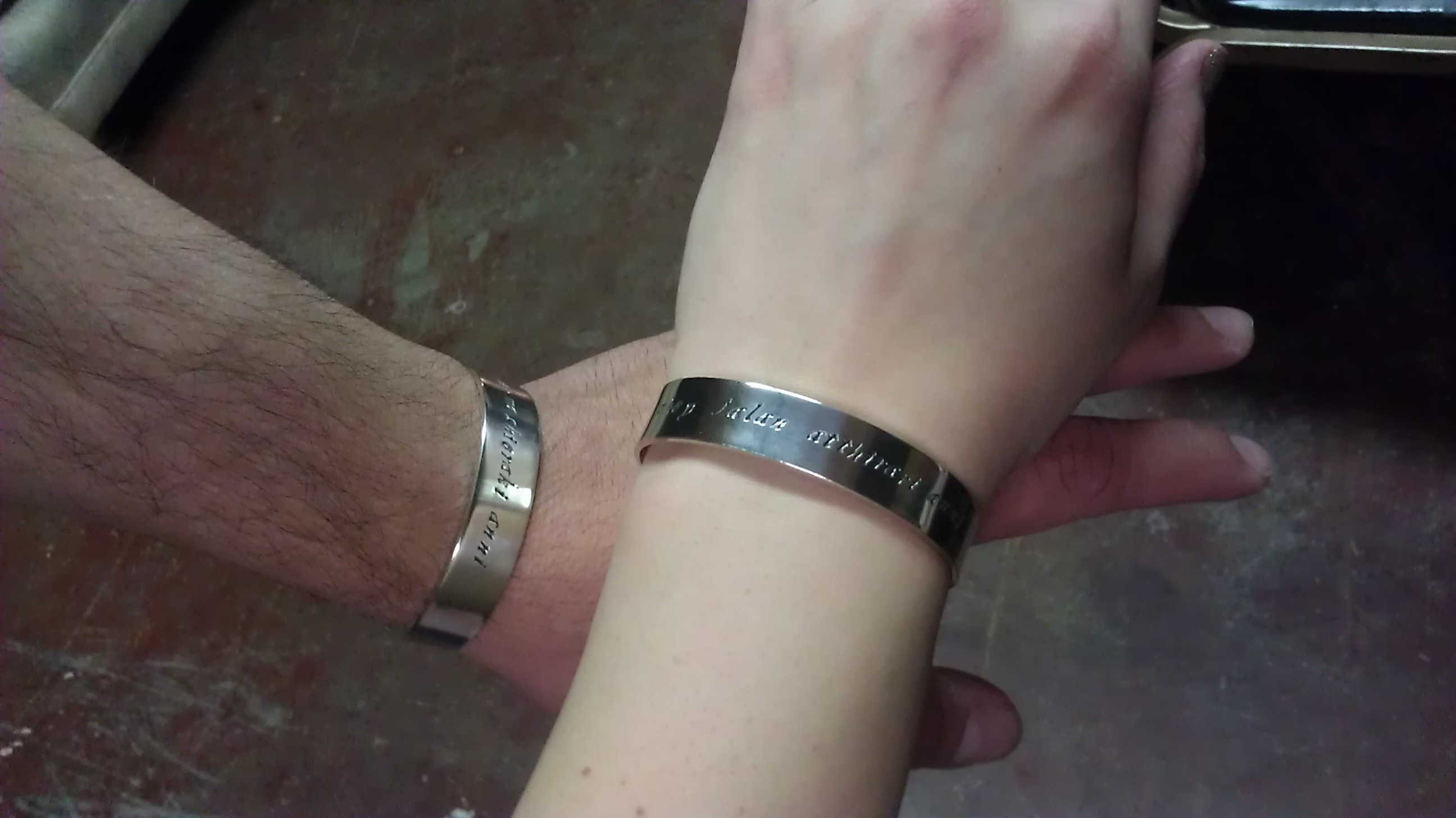A fellow conlanger (Scott Hamilton, creator of the Riddlesbrood language) sent some pictures my way of some new Dothraki jewelry. Sunnie Larsen and Marcos Duran got each other a joint anniversary present pictured below:

The bracelets say “zhey jalan atthirari anni” (hers) and “zhey shekh ma shieraki anni” (his). Very nice! They came from Etsy designer rubybliss (I should get me one of them one day…).
In other news, I’m going to be traveling to the following events in the next few months. If you’re nearby, come say M’ath!
- SWTX PCA/ACA Conference, Albuquerque, NM, February 13-16
- TEDActive 2013, Palm Springs, CA, February 24
- TED 2013, Long Beach, CA, February 25-March 1
- ConDor 20, San Diego, CA, March 8-10
- NorWesCon 36, Seattle, WA, March 28-31
- UCSD, San Diego, CA, April 19, 25
- LCC5, Austin, TX, May 4-5
- BayCon 31, Santa Clara, CA, May 24-27
- Comic-Con, San Diego, CA, July 18-21
- El Ser Creativo, Madrid, Spain, November 7-9
There may be some others that come up within this time period, so revisit this post periodically; I’ll update it. Until then, davralates asshekhi yeri!

I’ve been trying to research but can’t seem to find an answer to this…but what is the difference between putting ‘zhey’ in front of the phrases? I’ve seen it included on some sites but it’s never consistent. I’ve listened to some of the episodes and I’ve yet to come across where they say it.
Mostly curious because my husband and I are wanting to get his and hers tattoos including the phrases. I’m stressing over doing it the right way.
Zhey is a vocative particle. You use it before a name when talking to that person directly. For example, in talking to you in Dothraki in this comment, if I ever were to refer to you by name, I’d say zhey Meghan. It has a secondary use to kind of add a person to a conversation. So, for example, let’s say I was talking to you, and Drogo was listening to the conversation but not really a part of it, I could say (directly to you), “And you can take zhey Drogo into battle with you.” That would be a way of inviting him to the conversation, and letting you know what (a) that’s who that person is, and (b) you should include him in the rest of the conversation.
Does that make sense?
I understand now (: Thanks a million for the response.
That looks really cool. By the way thanks again to you and Scott for doing such a great job on the Riddlesbrood language. Scott just finished up with the fond for the conlang and its terrific!